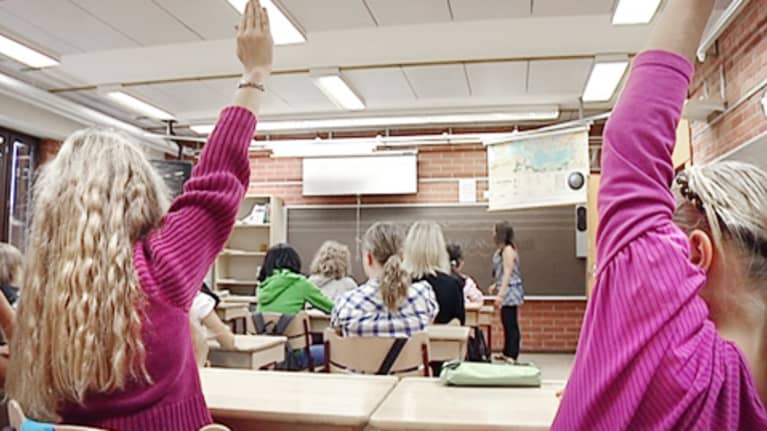Studies of the Finnish education system show that the country’s gifted students are often in need of more support and personal guidance. The country’s revamped core curriculum claims to take the needs of these students better into consideration. The architects of the new education concept say the central pillar of the new system - referred to as phenomenon teaching - is designed to better allow pupils to perform at their own capability.
The Kallahti primary school in the Helsinki district of Vuosaari has utilized phenomenon teaching in its instruction for over a decade already. Next year the entire country will come on board.
Phenomenon teaching uses one overarching topic to connect instruction over several different subject areas. The theory goes that in this way, pupils will gain a deeper knowledge of the material and will be given more opportunities to come up with questions independently. This new development is expected to boost the role of advanced students in the classroom, as it will provide additional challenges.
“We don’t set any kinds of limits. Pupils are always quick to ask ‘Is it finished?’, ‘Is this good?’ or ‘Have I done everything I need to?’” says Veli-Matti Harjula, a teacher at the Kallahti pilot school.
“The beauty of phenomenon teaching is that you can always think of another question to ask. Or expand upon the topic even further to meet the student’s growing interest and knowledge and skill level,” he says.
The top ten
It has been estimated that so-called gifted students make up ten percent of the student population.
“Many teachers have admitted that most of their attention is directed at students with learning difficulties. Advanced pupils can easily be left without the attention they need, because they are also difficult to identify in large groups,” says education professor Kirsi Tirri.
Tirri says the introduction of phenomenon teaching next year is a positive development, but it won’t solve the problem on its own.
“One solution is to speed up studies for those who pupils who have shown great success or are clearly ahead in certain subjects. Skipping a year is also possible, but this is not an option that is used frequently in Finland. The new ‘classless’ approach in Finland’s secondary schools is a step in the right direction,” she says.
More challenges
“Talented students are often given exercises that bore them. They should be challenged more. Sports proficiency, for example, is much more highly valued in Finnish schools than academic proficiency,” Tirri says.
Kallahti teacher Veli-Matti Harjula says Finland must nevertheless exercise caution that its best and brightest are not unduly singled out.
“School is also an important place for learning skills that are useful in life, working life in particular. As the student population in Finland becomes more diverse, it is increasingly important that pupils learn to interact with all kinds of people,” he says.
Tirri agrees that any differentiation should occur within acceptable limits.
“Talented pupils could spend some of their time in groups of their own and the rest of the time with others. Yet research has shown that they feel most comfortable with students who share the same interests.”
